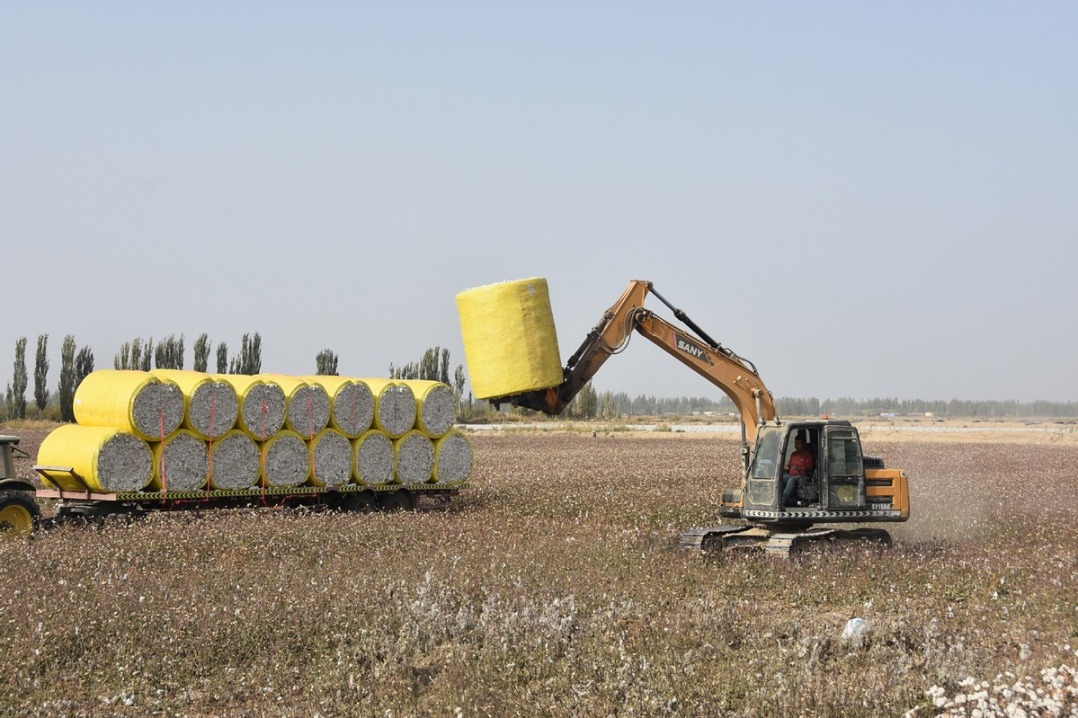Rain respite aids fall harvest in Shandong


Clear weather in recent days has helped Shandong province regain strong momentum for its autumn harvest, with local authorities and farmers racing against time to gather crops after historic October rainfall delayed agricultural activities.
As of Wednesday, approximately 82.8 percent of the province's autumn grain, totaling about 3.63 million hectares, had been harvested, according to the Shandong Provincial Department of Agriculture and Rural Affairs. About 3.34 million hectares of corn, accounting for 85.8 percent of the total planting area of this major autumn grain, had been reaped, the data showed.
Entering October, Shandong experienced rare continuous rainy weather. In the first 13 days of the month — the typical time for corn harvest — the province's average precipitation reached 141.3 millimeters, 751.2 percent higher than the 16.6 mm average for the same period in previous years. Several more rounds of rainfall occurred later on, posing challenges to the corn harvest.
To mitigate the impact of the prolonged rain in many regions across the country, the central government allocated 484 million yuan ($68 million) to aid agricultural disaster relief in seven provinces, including Hebei, Shanxi, Henan and Shandong. This funding supports efforts to speed up crop harvesting, dry damp grain and drain waterlogged farmland.
The Shandong agricultural authority promptly released detailed information about grain drying service centers that are easily accessible for farmers. Additionally, 426 mobile drying units were deployed to major grain-producing areas.
In Suji town, Caoxian county, a crawler harvester was busy gathering corn on Monday. The machine, which demonstrates its superiority in wet conditions, is capable of operating in 50-centimeter-deep water and harvesting approximately 6.7 hectares daily.
"Besides the over 66 hectares I planted, I'm also helping nearby smallholders gather their corn," said An Senping, the harvester owner. This year's autumn harvest is truly challenging with the heavy rainfall, An added.
Li Yihong, a villager from Linqing, a county-level city in Shandong, said he planted 0.8 hectares of corn this year.
"For us, harvesting is manageable despite the difficulties. The bigger problem is drying the corn," he said. Properly drying damp corn is crucial to preserving the harvest, Li noted, adding that losses could be significant if the corn isn't dried in time and gets moldy.
The Linqing agricultural authority has partnered with local grain enterprises to provide purchasing and drying services to farmers, with designated drying locations available to farmers to dry their corn.
"We know the locations of drying facilities, but for small-scale growers like me with just under a hectare, transport costs are a big problem," Li said. "Fortunately, the city arranged for purchasers to buy the grains directly from the fields. This solves storage issues for smallholders. The price for fresh corn ears is about 1 yuan per kilogram, similar to previous years," Li said.
Agricultural authorities have reminded farmers to capitalize on the favorable weather by coordinating operations of harvesting, drying, storage and planting. Intensified efforts are being made across the entire chain — from accelerated harvesting and sun-drying to land preparation and sowing — to ensure closely-linked measures are implemented to strengthen the grain security foundation.
As of Tuesday, the autumn grain harvest approached 80 percent across the country.
China's corn and corn flour imports from January to September totaled 930,000 metric tons, down 92.7 percent year-on-year, according to the General Administration of Customs.




































